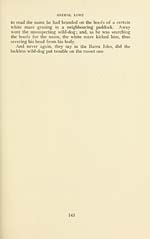Ossian Collection > Peat-fire flame
(184)
Download files
Complete book:
Individual page:
Thumbnail gallery: Grid view | List view

CHAPTER XII
WELL LORE.
THE wells and springs in Celtic Scotland, to which
legend and tradition cling, are innumerable. In the
following pages, therefore, it has been possible to
allude to but a few of these. Up till about the end of the
sixteenth century, most of these wells were regarded as
sacred; and a glance through ancient kirk-session records
reveals the persistence with which fines were imposed upon
those who were adjudged guilty of having desecrated any
of them. In the seventeenth century, however, severe
restrictions were placed on well- worship. In 1638 the
General Assembly of the Church of Scotland formally
discredited all superstitions associated with wells, and joined
in a vigorous campaign to stamp out well-worship, which it
now regarded as an idolatrous observance of the worst
kind. Despite this, less than twenty years later the
Presbytery of Dingwall found it necessary to issue stern
orders against the practice of visiting wells in Wester Ross
for the purpose of consulting their waters. Indeed, belief
in the power of holy water was so persistent at this time
that the Privy Council found itself constrained to select
commissioners to " wait at Christ's Well in Menteith on the
first day of May, and to seize all who might assemble at the
spring and imprison them in Doune Castle."
Among those, upon whom the General Assembly poured
excessive scorn, were persons " found superstitiously to have
passed in pilgrimage to Christ's Well on the Sundays of
May to seek their health, that they shall repent in sacco
(sackcloth) and linen three several Sabbaths, and pay twenty
lib. (Pounds Scots) totics quotics for ilk fault."
144
WELL LORE.
THE wells and springs in Celtic Scotland, to which
legend and tradition cling, are innumerable. In the
following pages, therefore, it has been possible to
allude to but a few of these. Up till about the end of the
sixteenth century, most of these wells were regarded as
sacred; and a glance through ancient kirk-session records
reveals the persistence with which fines were imposed upon
those who were adjudged guilty of having desecrated any
of them. In the seventeenth century, however, severe
restrictions were placed on well- worship. In 1638 the
General Assembly of the Church of Scotland formally
discredited all superstitions associated with wells, and joined
in a vigorous campaign to stamp out well-worship, which it
now regarded as an idolatrous observance of the worst
kind. Despite this, less than twenty years later the
Presbytery of Dingwall found it necessary to issue stern
orders against the practice of visiting wells in Wester Ross
for the purpose of consulting their waters. Indeed, belief
in the power of holy water was so persistent at this time
that the Privy Council found itself constrained to select
commissioners to " wait at Christ's Well in Menteith on the
first day of May, and to seize all who might assemble at the
spring and imprison them in Doune Castle."
Among those, upon whom the General Assembly poured
excessive scorn, were persons " found superstitiously to have
passed in pilgrimage to Christ's Well on the Sundays of
May to seek their health, that they shall repent in sacco
(sackcloth) and linen three several Sabbaths, and pay twenty
lib. (Pounds Scots) totics quotics for ilk fault."
144
Set display mode to: Large image | Transcription
Images and transcriptions on this page, including medium image downloads, may be used under the Creative Commons Attribution 4.0 International Licence unless otherwise stated. ![]()
| Early Gaelic Book Collections > Ossian Collection > Peat-fire flame > (184) |
|---|
| Permanent URL | https://digital.nls.uk/81148267 |
|---|
| Description | Selected books from the Ossian Collection of 327 volumes, originally assembled by J. Norman Methven of Perth. Different editions and translations of James MacPherson's epic poem 'Ossian', some with a map of the 'Kingdom of Connor'. Also secondary material relating to Ossianic poetry and the Ossian controversy. |
|---|
| Description | Selected items from five 'Special and Named Printed Collections'. Includes books in Gaelic and other Celtic languages, works about the Gaels, their languages, literature, culture and history. |
|---|

